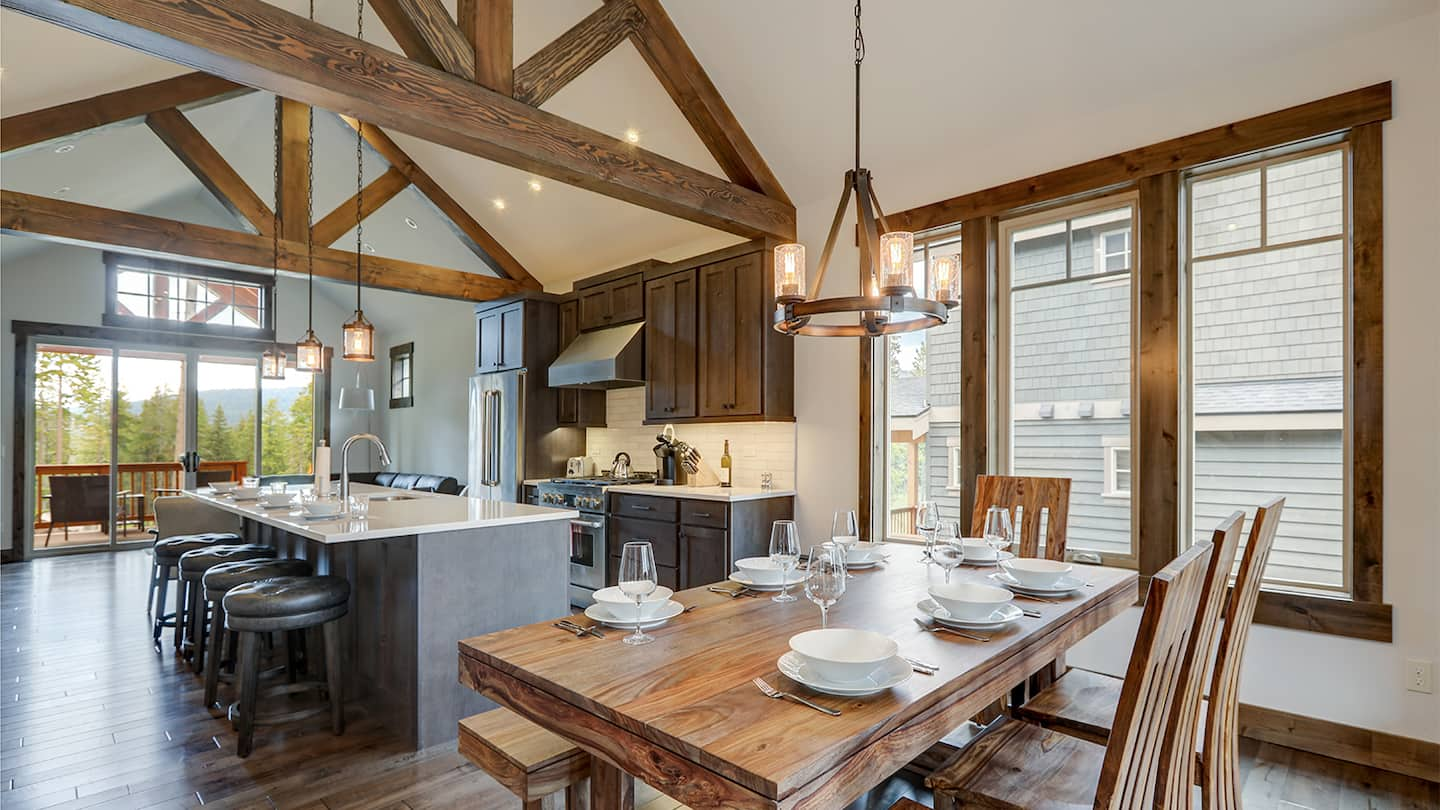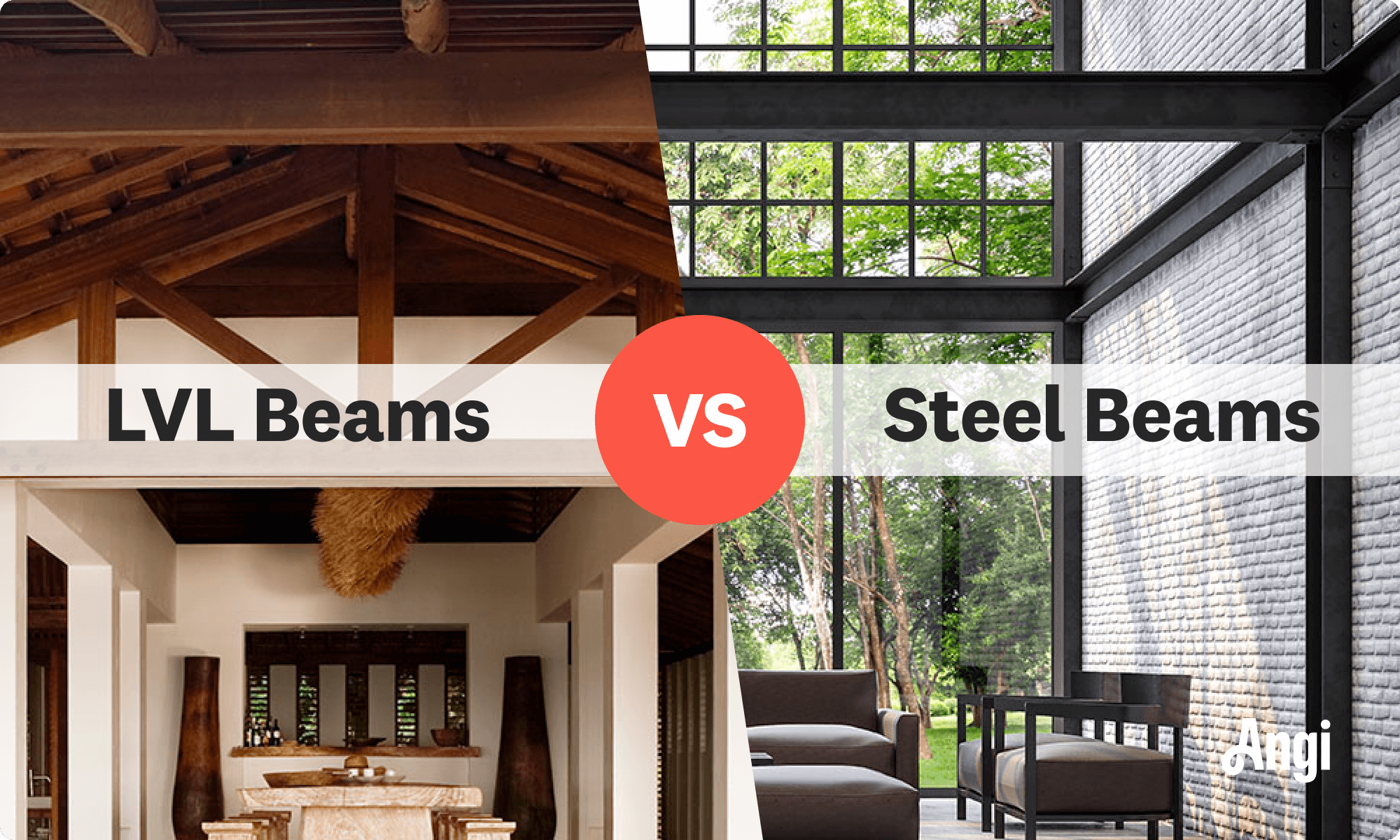
The cost of a structural engineer is easily justifiable given the value they bring to the table. Use this guide to see what hiring your professional will total.
The cost to install an LVL beam averages around $2,500, but prices commonly range from $1,500 to $4,000, depending on the size, location in your home, and more.


Longer and thicker beams aren’t more expensive just because of the material— installation is also more laborious.
You’ll need to hire a structural engineer for this job, which averages about $550.
Don’t be surprised if this project spurs other tasks, like electrical, drywall repair, plumbing, and painting.
Novice DIYers can save up to $2,000 by handling the post-project build-back themselves.
While expensive, installing an LVL could log a 90% return on investment (ROI).
The average cost to install an LVL beam in your home is around $2,500, but prices can range from $500 all the way up to $6,000, depending on the size of the beam you need, the location in your home, and some other factors. You can expect to pay between $50 and $200 per linear foot for materials and labor.
The size of your LVL beam will play the biggest role in your installation costs. Longer and thicker LVL beams cost more for materials and take more effort and time to install, which drives up labor costs.
Most homeowners will choose LVL beams over traditional lumber because they want to open up their living space. The cost of the beam can depend on how long you want the span in your home without vertical supports. The longer the span, the thicker your LVL beam will need to be, with the thickest LVL beams available for residential use able to span between 20 and 30 feet.
Since a wider span without support is often the goal of installing an LVL beam, you can use the table below to figure out what size beam you’ll need and how much it will cost based on the span.
| Span Goal (linear feet) | Dimensions (inches) | Average Cost |
|---|---|---|
| 10 | 2x6 | $500–$2,000 |
| 12 | 2x8 | $600–$2,400 |
| 15 | 4x10 | $800–$3,000 |
| 20 | 4x12 | $1,000–$4,000 |
| 25 | 4x15 | $1,250–$5,000 |
| 30 | 4x16 | $1,500–$6,000 |
LVL beams are structural components of your home, whether you’re installing one as part of a new construction project or retrofitting your home with one to open up the living space. As such, you’ll need to hire a structural engineer to design the beam, confirm appropriate dimensions, and ensure the new beam will support the weight above it without issues.
The cost of a structural engineer averages around $550 for a project like installing an LVL beam, but prices can fluctuate between $350 and $800 depending on the size of your beam and whether you need additional structural changes to your home to support the LVL beam.
While a structural engineer designs and signs off on your construction plans, you’ll also need a local general contractor to carry out the actual installation. The cost to have a general contractor install your LVL beam will often fall between $40 and $190 per linear foot, making up between 80% and 95% of the total cost.
Average costs for materials and installation labor sit around $2,500 total. Your prices could be higher or lower, depending on the length of the beam you’re installing, how much demolition work is necessary to expose the beam you’re replacing, and how much build-back you need done after the job is complete.
Installing an LVL beam often means removing vertical support beams or load-bearing walls in your home, which could also involve rerouting electrical wiring and plumbing lines. If that’s the case for your project, you’ll also need to budget for the cost of an electrician and a plumber.
Electricians charge between $50 and $130 per hour or an average of $350 to move electrical boxes and switches on the wall you’re removing. Hiring a plumber costs between $45 and $200 per hour, or a total of around $400, to move water supply lines and drain lines in the wall you’re removing and replacing with an LVL beam.
Most of what you’ll pay to install an LVL beam goes toward labor, and labor costs tend to scale with the local cost of living. You’ll see different beam installation costs depending on where you live, with higher prices expected in more expensive states and near major metropolitan areas.
| State | LVL Beam Cost |
|---|---|
| California | $3,580 |
| Florida | $2,560 |
| Georgia | $2,270 |
| Illinois | $2,370 |
| Michigan | $2,270 |
| New York | $3,090 |
| North Carolina | $2,440 |
| Ohio | $2,350 |
| Pennsylvania | $2,380 |
| Texas | $2,290 |
There are some additional cost factors that your structural engineer and general contractor may or may not include in the pricing mentioned above. You should speak with your professionals to see what is and isn’t included, and pay attention to the following to get accurate totals.
All municipalities will require building permits for any work that alters the structure of your home, like installing an LVL beam. In most cases, permits cost anywhere between $100 and $500 for this project. If you’re installing LVL beams as a part of a new construction project, total permit costs will be higher, but only a small portion will be associated with the LVL beam itself.
Most general contractors will include build-back in their estimates to install an LVL beam, but some won’t. If you’re an avid DIYer, you can tackle things like patching sheetrock and installing flooring over the gap where you remove your load-bearing wall or vertical supports. If not, you could pay between $400 and $2,000 for build-back after LVL beam installation, depending on the length of the beam.
Installing LVL beams changes how the load of your home sits on the foundation. In some cases, you might have to pay additional fees to reinforce the parts of the foundation that will receive additional load. In most cases, this will involve placing supportive piers beneath the affected areas. This could cost between $1,000 and $3,000 per pier, and a structural engineer may need to conduct a foundation inspection to determine how many piers are required.
Given that up to 95% of the cost to install LVL beams goes toward labor, you might be tempted to try to install it yourself. Doing so would bring down your cost per linear foot from between $50 and $200 to between $8 and $12, which would mean major savings. However, since installing an LVL beam involves structural changes to your home, you should always leave the work to experienced and insured professionals.
Not only is making changes to structural components in your home very dangerous, but it’s also illegal in most areas. Most municipalities mandate that a structural engineer draw up plans for any structural work and a licensed contractor perform the actual work.
Even if it is legal in your area, the risks involved with mistakes include severe injury, death, structural damage, and whole house collapse, so this is one job best left to a local structural engineer and general contractor.
If you already have an LVL beam installed and find that it’s damaged or cracked, you’ll have to decide between a replacement or repair. Replacing the beam will cost between $50 and $200 per linear foot, while repairing or reinforcing will cost significantly less, depending on the extent of the damage. The most affordable option could be to frame a new wall underneath the existing beam for added support, but this will change the floor plan of your home.
While repairing or reinforcing will save you money, it’s often better to replace instead of repair when it comes to structural components that are relatively easy to access, like LVL beams. Replacing will give you greater peace of mind and should provide more value, as the replacement beam will last longer than a repair. Just be sure to address the underlying issue that caused the damage to avoid repeat issues.
LVL beam installation can reach up to around $6,000, making it an expensive project. There are a few things you can do to help keep costs down.
DIY the build-back. While you should always leave the design and installation of your LVL beam to the pros, you can save some money on labor by patching drywall and finishing flooring around the vertical supports or load-bearing walls you’re removing.
See if your structural engineer will do the construction work. Some structural engineers can both design and install your new LVL, and you may get a small discount on the installation labor if you have your engineer do both.
Consider LVL alternatives. You can consider more affordable options, like solid lumber with vertical supports of glulam beams instead of LVL. These don’t cost as much, but they also can’t span as large of a distance without vertical supports.
In most cases, yes, installing LVL beams will increase your home value because they allow for wider gaps in your living space without vertical supports. Most homebuyers now prefer open floor plans, and LVL beams are more suited for these than solid lumber and other LVL beam alternatives that can’t provide the same open spans. In most cases, you can expect to see between an 80% and 90% return on investment (ROI) when installing LVL beams to open up your living space.
If you’re looking to maximize the bump in your home value, you could opt instead for a steel I-beam over a wooden beam. This is a more expensive option, but you can span much greater distances for an even more open floor plan that will appeal to buyers.

Home is the most important place on earth, which is why Angi has helped more than 150 million homeowners transform their houses into homes they adore. To help homeowners with their next project, Angi provides readers with the most accurate cost data and upholds strict editorial standards. We extensively research project costs to develop the pricing data you see, so you can make the best decisions for you and your home. We rely on reputable sources, including the U.S. Bureau of Labor Statistics, academic journals, market studies, and interviews with industry experts—all to ensure our prices reflect real-world projects.
Want to help us improve our cost data? Send us a recent project quote to [email protected]. Quotes and personal information will not be shared publicly.
From average costs to expert advice, get all the answers you need to get your job done.

The cost of a structural engineer is easily justifiable given the value they bring to the table. Use this guide to see what hiring your professional will total.

Looking to add utility and easier access to your basement? Use this guide on the cost to cut a concrete wall to add a door to your basement.

A damaged main support beam can cause serious structural damage to your house. Learn how much it costs to replace a main house support beam.

It can be hard to choose the right pro for any job, but it matters. Learn how to hire a structural engineer who'll get the job done right from start to finish.

Do you have a load-bearing wall standing between you and your projects that you want to remove? Learn about the cost of removing a load-bearing wall.

Before you can start a major remodel, you need to know how to tell if a wall is load-bearing. Learn what a load-bearing wall is and how to identify one.